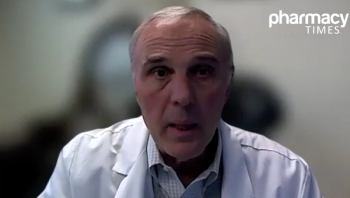
IQVIA Reports Pharmacy Industry Trends at NACDS Regional Conference
Specialty medication has grown to about 55% of net spending, which is up by 28% since 2011 mostly driven by autoimmune diseases and oncology.
In a session at the National Association of Chain Drug Stores Regional Meeting 2023 in Orlando, Florida, Scott Biggs, director of Supplier Services at IQVIA, and Doug Long, vice president of Industry Relations at IQVIA, shared up-to-date data in the pharmacy industry.
They also highlighted pharmacy forecasts, issues, and trends in demographic markets and sales for 2023.
“You can’t go anywhere in America today without talking about cold, flu, [respiratory syncytial virus] (RSV), COVID-19,” Long said during the session.
They started by highlighting data related to the common cold, COVID-19, flu and the cold respiratory syncytial virus. All cold and flu-like symptoms were at an all-time high for the 2022-2023 flu season, as of January 14, 2023, but by December 17, 2022, the numbers began to decline.
As these numbers start to decrease, so does the number of cold and flu products that are bought over the counter. The numbers are now in a slow decline for both adults and children.
The number of deaths from COVID-19 are still declining, as well as United States weekly COVID-19 deaths, according to the World Health Organization.
Global cases of COVID-19 also continue to decline.
During the presentation, Biggs and Long said that a vast majority of all vaccines were administered in pharmacies, rather than physicians’ offices.
For market trends, determined by medical activity and claims, health system use operated at nearly pre-COVID-19 levels.
Cumulative institutional claims were flat over 2022, but office visit claims increased over 2021 levels, according to the presenters.
Overall, telemedicine began to slow during 2022 compared with 2021. As COVID-19 enters the endemic phase, diagnosis visits have switched back to in-person from telemedicine visits, with asthma diagnoses at 10% and 7% and attention deficient/hyperactivity disorder (ADHD) at 16% and 5%, respectively.
Further, for ADHD, the number of prescriptions has increased since the beginning of the pandemic.
“The specialty spend is up to double digits; the traditional spend is about the mid-single digits,” Biggs said. “Now this change would’ve happened a couple years ago, except the COVID-19 vaccines came along the way, and those were traditional products.”
Specialty medication has grown to about 55% of net spending, which is up by 28% since 2011.
Most of the specialty medications market is driven by autoimmune and oncology.
Immunology has grown by $16.7 billion, and oncology grew by $9.4 billion from September 2021 to September 2022, according to the presenters.
Specialty medication has also grown across retail, mail-order, and non-retail pharmacies.
“Eighty-four percent of [retail] business on a dollar basis is traditional, and the rest of it, at 16% or so, is specialty,” Biggs said. “Mail [order]: 83% of their business is specialty, and 17% is traditional.”
Retail specialty pharmacy is primarily HIV medications, Biggs said, adding that it is followed by immunology, mental health, and oncology.
The presented reported that fentanyl continues to be the leading cause of opioid deaths, though deaths related to prescription opioids have been declining.
“This is an area that I really feel this industry has done a great job in controlling what happens to these opioids,” Long said.
Additionally, the presenters reported that the number of product launches in 2022 was down compared with past years and the pipeline has grown with new products over the past 5 years, with oncology leading the way.
Ultimately, they concluded that the role of the pharmacist is still rapidly expanding.
Reference
Biggs S, Long D. US pharmaceutical trends, issues, & outlook. Presented at: National Association of Chain Drug Stores Regional Meeting 2023. Orlando, FL. January 30, 2023.
Newsletter
Stay informed on drug updates, treatment guidelines, and pharmacy practice trends—subscribe to Pharmacy Times for weekly clinical insights.
















































































































































































































